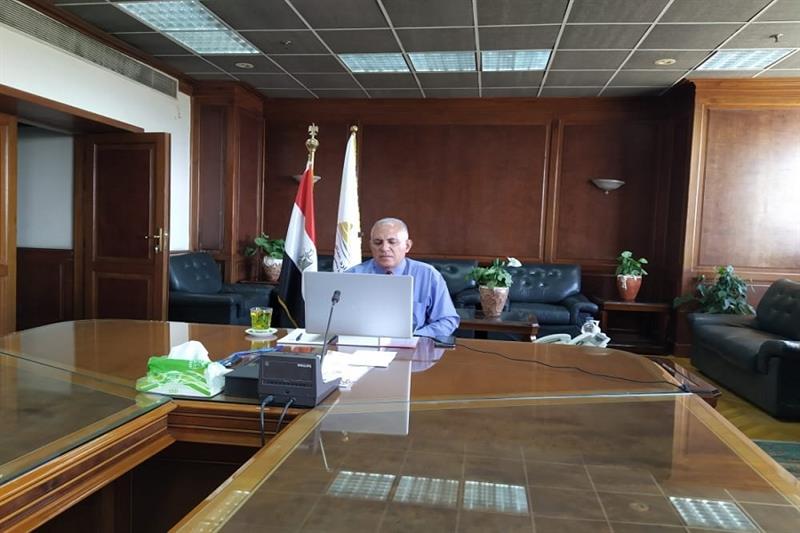
Minister of Water Resources and Irrigation Mohamed Abdel-Ati while heading a video conference meeting with the Permanent Committee for Regulating Nile's Revenue on Wednesday. (Photo courtesy of the Ministry of Water Resources and Irrigation).
Abdel-Ati's remarks came during a video conference meeting with the Permanent Committee for Regulating the Nile’s Revenues, held regularly to ensure water resources are optimally managed to fulfil the country’s water needs.
The Nile’s flooding season, which takes place from July to September, is caused by heavy rain on Ethiopian highlands. More than 85 percent of Egypt’s river waters flow from the Ethiopian highlands through the Blue Nile — one of the Nile’s two main tributaries along with the White Nile.
Officials from the ministry and the National Water Research Centre (NWRC) attended the meeting to review the ministry’s regulations to manage water resources during the coming “maximum need period,” according to a statement by the ministry.
Abdel-Ati instructed the ministry and affiliated agencies to step up efforts to remain ready throughout the season and to continue the activation of emergency rooms. These efforts “will positively reflect on the implementation of Egypt's sustainable development goals and offering services to beneficiaries with the highest degree of justice and effectiveness.”
The irrigation minister also reviewed follow-up work on the hydrological situation of the River Nile, the expected flooding scenarios, and reducing water complaints.
Egypt — one of the driest and most water-scarce countries in the world — receives around 60 billion cubic metres (bcm) of water annually, mainly from the Nile. However, its needs stand at around 114 bcm, placing the 102-million-plus country well below the international threshold for water scarcity at 560 cubic metres per person annually.
The large gap in water resources in Egypt is overcome by importing 54 percent of its virtual water and reusing 42 percent of its renewable sources, Abdel-Ati said in an earlier statement.
Access to Nile water is one of the outstanding points in the long-running Grand Ethiopian Renaissance Dam (GERD) dispute between downstream countries Egypt and Sudan and upstream Ethiopia.
Despite the opposition of the downstream countries to filling the GERD without signing a binding agreement that could secure the three countries’ water needs, Ethiopia is getting ready to execute the third filling of the reservoir in August and September, according to Kiffle Horo, the GERD’s project manager.
Short link: